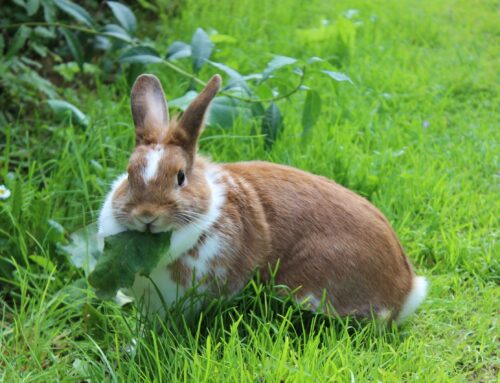As the New Year dawns, the fun is sadly coming to an end. No doubt many of you are back to work, perhaps with a slight headache from the last party! Maybe this year, you’ve decided to make New Year’s resolutions, like drink less, eat healthier, or go to the gym more. Whether you stick to these goals for long or not, perhaps this year you might take a look at your pets and consider if they should be losing a little weight as well. Today we will be asking if weight loss is your pet’s New Year’s resolution, why this is important, and how you can help them achieve this goal!
Is weight loss your pet’s New Year’s resolution?
Knowing whether your pet needs to lose weight is not quite as simple as how much they weigh. The weight of pets varies quite significantly, particularly between dog breeds, and what is normal for one animal may be too heavy for another. It has also been shown that we all tend to underestimate how heavy our pets are – what should really be considered overweight, we often consider normal. This can mean that problems may not be spotted until it is too late. Because of this, it is important to identify a little extra weight early, before it becomes a big problem.
The simplest way to do this is to look at your pet’s silhouette from above – a larger animal will have a less distinct shape, a bulging waist and hips, and be generally rounder. There are plenty of charts online that will demonstrate the correct shape of dogs and cats. A better method is to regularly weigh your pet – a single measurement is not always useful, so regular weighing will show patterns and any long-term changes in weight. Getting this done at every vet visit is important too, so your vet has a record of any weight change.
Finally, the best method of determining if a pet is overweight is via body condition scoring, or BCS. This is where you place your hands on your pet’s body, and feel for specific areas of fat coverage. Larger animals will have excess fat over the ribs, hips, abdomen and neck, and their bones will be hard to feel. BCS is usually put on a scale from 1-5, or 1-9, with numbers above 3 or 6 respectively indicating overweight animals. Your vet will know how to do an accurate BCS, so ask them to show you the best technique to do it regularly at home.
None of these methods are perfect, and, as mentioned above, large increases in weight are often only spotted when it is too late. This is why regular weight checks are so important. For animals and breeds at specific risk of weight gain, it is worth visiting the vets more often, and getting your pet’s weight checked each time. If you have found that your pet is overweight, now is the perfect time to start their New Year’s resolution.
Why is it important that your pet loses weight?
So why is weight gain a problem in pets? Weight gain usually refers to an increase in body fat, of which 50% is internal fat we cannot see (which is why when fat is seen on the outside, it should be remembered there is the same amount again inside!). Fat is not inert, but a living tissue that releases hormone signals, called adipokines, into the bloodstream. Too much fat, due to poor diet and lack of exercise (among other factors), leads to excess adipokines and has been associated with excess inflammation in the body. This is linked to a large number of conditions and diseases including reduced heart function, liver disease, diabetes mellitus, GI disease, cancer, cystitis, IBD, arthritis and movement problems, and more.
The other problem with being an overweight pet is that their body starts to get used to it – this makes it very hard to lose weight, and makes it easier to gain weight again. Their body has actually changed what genes are switched on or off, in favour of retaining fat. This is why keeping a slim pet slim is much better than attempting to reduce the weight of an overweight pet. Prevention is much easier than cure. Nevertheless, the UK has a huge number of overweight pets, with this number only growing – if your pet is among them, the next part of this article will give you some useful tips to help reduce their weight.
How can you help your pet lose weight?
To really emphasise the problem with having an overweight pet, vets now often refer to obesity as a ‘chronic disease’. This means that the problems caused by excess fat is not just a quick fix, but a life-long problem, as mentioned above. Weight loss is a long process, and can take a long time. Nevertheless, it can be done, and there are many success stories – making it your pet’s New Year’s resolution is a great way for you and your pet to stay motivated when things seem tough.
Weight loss requires changes in two main areas: diet and exercise.
Calorie input…
Starting with diet, the key is reducing intake. Most overweight pets eat far too much, and will require a dramatic reduction of intake. This can mean a reduced intake of hundreds of grams a day or more – this drop will help reduce weight, but can leave your pet deficient in certain vitamins and minerals. It is worth discussing supplements with your vet for very large pets. Slowing down eating, avoiding treats, using low fat diets and having smaller more frequent meals are also all good steps to make.
However, it is essential that they don’t lose weight too fast – this can cause other health problems, such as liver failure. It is always best to discuss the rate of weight loss with one of our vets or vet nurses, as they can advise on the best food and the best amount to feed.
…calorie output
Regarding exercise, the rule is the more the better. Exercise should be intense to help burn fat – running, fetch, obstacle courses and swimming are all great forms of exercise. Especially in winter, it can be hard to find energy to get outside, so try and incorporate your pet’s exercise routine into your own, and both lose weight! With some pets, particularly cats, you may struggle to motivate them to exercise. You can increase their activity by putting food upstairs so they have to walk to get it, putting it inside moveable treat balls, or creating little obstacle courses they must navigate first. Anything to encourage movement is a benefit.
Diseases of obesity
Many obese pets may already be showing signs of disease related to their weight, and these diseases should always be managed as well. Some, unfortunately, can make dieting difficult, as weight-reduction diets may not be suitable. Working with the vet and discussing the best options will be a big help. As with healthy animals, monitoring weight is crucial for weight loss patients as well. Perform regular BCS and weighings at home, and attend our nurse-led weight loss clinics – these clinics are a great way for us and you to monitor progress, and can help you stay motivated and learn new weight loss tips.
Closing thoughts
If you’ve followed our little guide, had a little prod of your pet and decided they are a bit too large this New Year, do not worry – identifying excess weight is difficult, and doing so means you have taken the first step towards helping them lose it. Follow our tips above, speak to the vet, and it won’t be long before your pet is achieving their New Year’s resolution and shedding the pounds.



